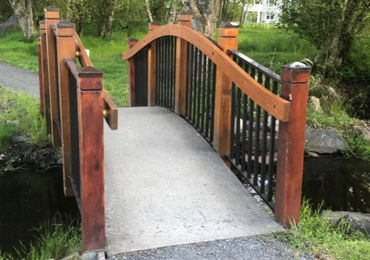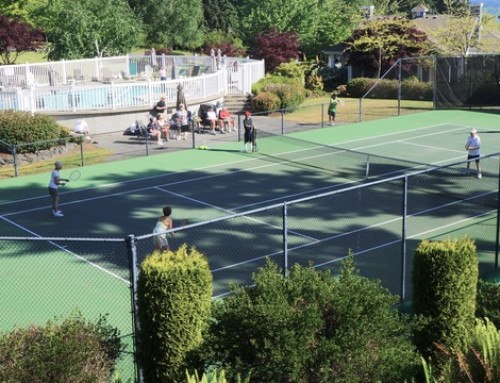

Background
The 4 Craig Bay bridges were installed as part of the original Development, we all admire and enjoy them. They were designed to create a unique look to the trails around the neighbourhood. Certain design flaws however have presented hazards for walkers and cyclers particularly in unpredictable changing weather conditions. The identified hazards have contributed to many injuries and near misses over the years: some were reported but most were not.
A serious incident occurred and was reported to the CLC this past winter. The root cause of the incident described the hazards created by snow and ice building up on the bridges walking slope. With no snow and ice removal program in place, falls on to the deck slope present a dangerous condition particularly with the lack of protection from falling onto the rocks and water below.
The incident report prompted the CLC to investigate the bridges building code compliance, identify all hazards and recommend any changes necessary to meet code, eliminate hazards, promote safety, and protect the CLC and Strata from liabilities.
Findings Presented to the CLC
- Removal of the existing 4 bridges and replacement with culverts was never an option. Residents have come to love the look which blends into the ambience of the community. Costs would have been prohibitive for removal.
- The “Three Bridges Walkway’ is a popular passage from the community down to the Heritage Land and water. It is an all-season pathway, used extensively from dawn to dusk by hikers, cyclists, and dog walkers, all various ages, and capabilities. The trails attract both residents and non-residents.
- Like your second story patio deck, guards are required under Section 9.8.4 of the Building Code to prevent falling to lower elevation greater than 2 feet.
- The original design did not comply to present building codes addressing fall protection associated with elevated walkways.
- The opening between vertical guard’s pickets shall not exceed 4 inches. The design of the guards also cannot facilitate climbing.
- The bridges were built with 5 vertical wooden posts, spaced at 45 inches to support the curved horizontal wooden handrail. The elevation difference from walkway surface onto rocks and water below is approximately 5 feet.
- The ramp is 16 inches higher at midpoint tapering down to the two ends. This measurement equates to a 10-degree slope from the centre to each end.
- Due to snow and ice buildup in the winter conditions, the walkway 10-degree slope becomes very slippery. If a fall occurred, there was no protection against a further injury by falling the 5 feet through the 45-inch opening, over the side onto the rocks and water below. In Loss Control terms, a minor injury has the potential to become a major injury.
- In the summer, cautious cyclists tend to slow down at the top of the bridge slope. They sometimes loose balance resulting in a sideways fall, again a potential for major injury if the rider ends up in the water and rocks below.
Guidelines and Corrective Measures Taken by the CLC
After reviewing the findings, the CLC in the best interest of the residents is stipulating that:
- The bridge structure must be upgraded to meet present building codes and protect the users year-round in all weather conditions.
- The 5 Craig Bay Strata and the CLC must be protected against potential liability due to structures not meeting Building Code safety requirements.
- Bridge modifications should maintain the original “Look and Feel” of the Craig Bay community.
- A contractor was hired to design, fabricate, and install a guard railing system compliant to Section 9.8.4 of the building code.
Looking Forward
- The installation of the protective railings is now completed.
- A wintertime weather program will be initiated to help keep the bridges’ walkways clear of ice and snow.
- Shovels and an environmentally and concrete-friendly de-icer will be conveniently located at each bridge during the winter months.
- If you are one of the first walker after a snowfall you can complement your morning exercise by taking a few minutes to help us condition the walking surface by clearing the snow and applying a sprinkling of de-icer.
- If all users pitch in to help, that part of the problem will also be solved.




